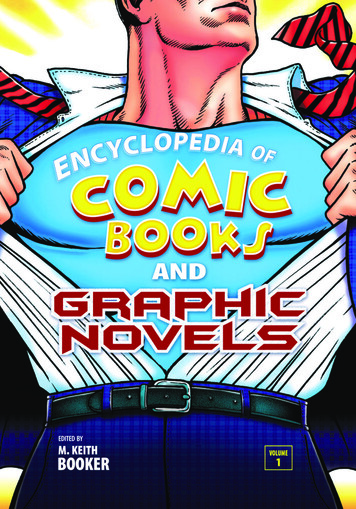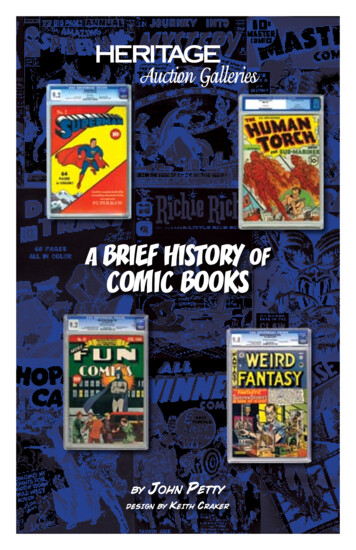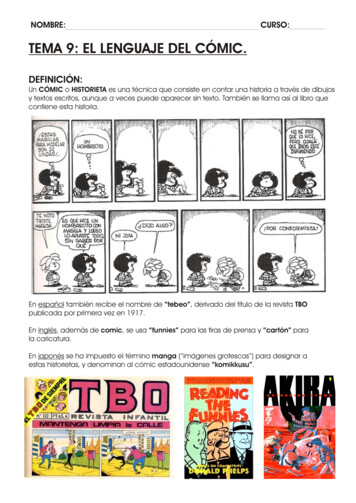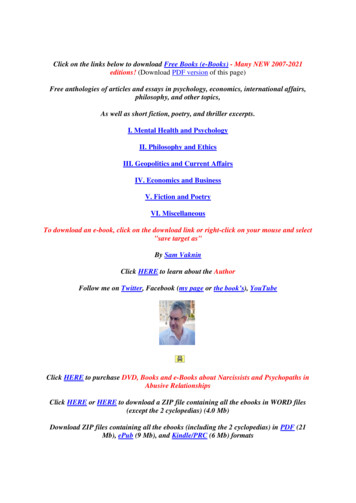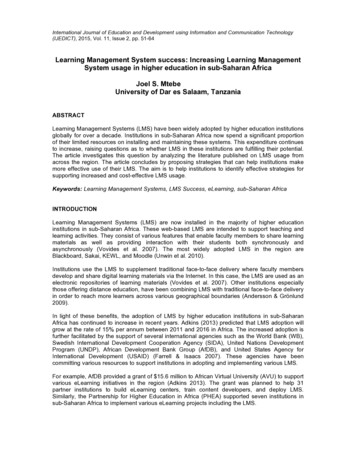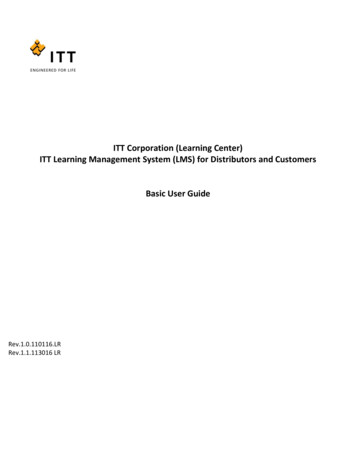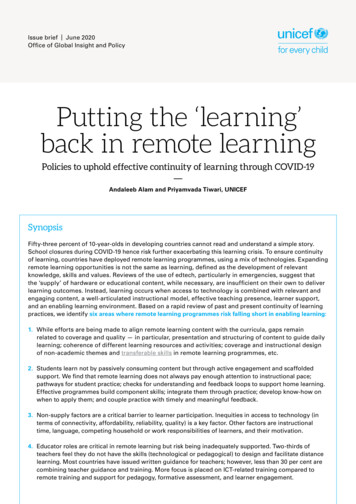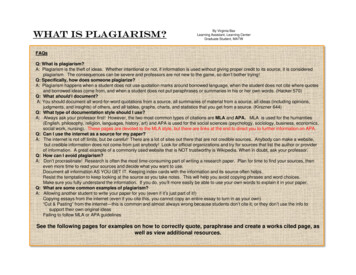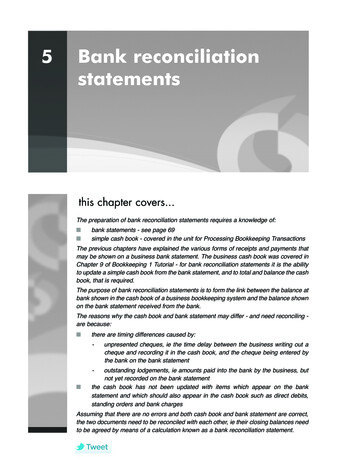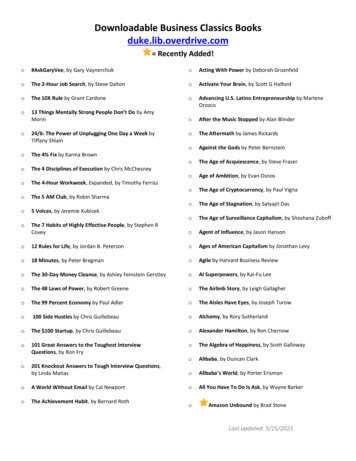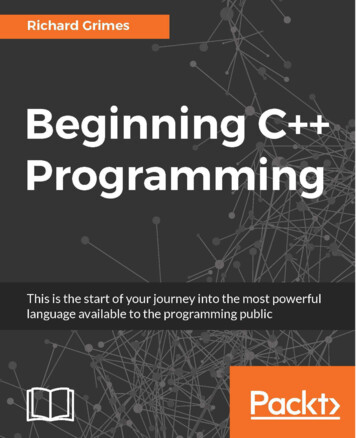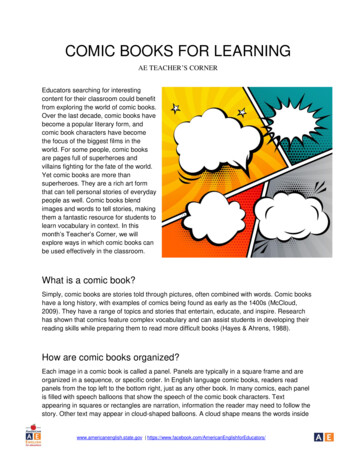
Transcription
COMIC BOOKS FOR LEARNINGAE TEACHER’S CORNEREducators searching for interestingcontent for their classroom could benefitfrom exploring the world of comic books.Over the last decade, comic books havebecome a popular literary form, andcomic book characters have becomethe focus of the biggest films in theworld. For some people, comic booksare pages full of superheroes andvillains fighting for the fate of the world.Yet comic books are more thansuperheroes. They are a rich art formthat can tell personal stories of everydaypeople as well. Comic books blendimages and words to tell stories, makingthem a fantastic resource for students tolearn vocabulary in context. In thismonth’s Teacher’s Corner, we willexplore ways in which comic books canbe used effectively in the classroom.What is a comic book?Simply, comic books are stories told through pictures, often combined with words. Comic bookshave a long history, with examples of comics being found as early as the 1400s (McCloud,2009). They have a range of topics and stories that entertain, educate, and inspire. Researchhas shown that comics feature complex vocabulary and can assist students in developing theirreading skills while preparing them to read more difficult books (Hayes & Ahrens, 1988).How are comic books organized?Each image in a comic book is called a panel. Panels are typically in a square frame and areorganized in a sequence, or specific order. In English language comic books, readers readpanels from the top left to the bottom right, just as any other book. In many comics, each panelis filled with speech balloons that show the speech of the comic book characters. Textappearing in squares or rectangles are narration, information the reader may need to follow thestory. Other text may appear in cloud-shaped balloons. A cloud shape means the words insidewww.americanenglish.state.gov rs/
the balloon are the thoughts of the character in the panel. Finally, text not inside a square orballoon are words indicating sounds such as “beep” for a computer noise, or “thud” for thesound of a person falling down.Figure 1: A speech balloonshows a character’s speechFigure 2: A thought balloonshows a character’s thoughtsFigure 3: A sound in a comicbookImages from Pixabay.comFigure 4: An example of the structure of a comic book. The Trace Effects comics can be foundhere.www.americanenglish.state.gov rs/
Figure 5: A student-made comic from Why English? Comics for the Classroom.Ways to Use Comics in the ClassroomJigsaw ActivityIn a jigsaw activity, students are usually assigned to put sentences in the correct order. Withcomics, teachers can cut the comic book pages apart to make each panel separate then shufflethe panels and give students the panels to put into the correct order. This activity helps studentswith their vocabulary and also helps students discover and understand how comics areorganized.For some examples of jigsaw and comic book activities, check out:English Teaching FORUM Jigsaw VocabularyMultibriefs: Comic Strips and Language Learnerswww.americanenglish.state.gov rs/
Cloze ActivitiesIn cloze activities, words are deleted from a paragraph, and students then fill in the blanks.Comics are perfect for cloze activities since teachers can delete words in the comic andstudents can use both the sentences and drawings to determine the correct words. Because oftheir rich visual art, comics are a fantastic resource to help students understand vocabulary andgrammar in context.For an example of a comic book cloze activity, check out:Why English? Comics for the Classroom - Do You Speak English?Prediction ActivityComics tell a specific story through a series of panels. This design makes them well-suited forengaging students in prediction activities. Provide students a comic book one page at a time,and after they read each page have them write down their predictions about what will happen onthe next page. In a speaking class, students can share their prediction with a partner or in smallgroups.For more on using comics for prediction activities, check out:Activity Three – What Happens Next?For more on using comics in the classroom, check out the following webinar:Using Comics in the English Language ClassroomStudent-Created Comic BooksFor more advanced English classes, comic books provide opportunities for students to createtheir own stories to share with the world. Many people new to comic books think artistic talent isimportant, but comics can range from rich visual works to simple drawings. These two exampleswere created by students for the Why English? Comics for the Classroom project, a tremendouscollection of student-made comics.ConclusionComic books provide rich stories full of art and vocabulary that can help students inunderstanding vocabulary and grammar in context. Even more, they can inspire students to telltheir own stories when comic book creation is integrated into the classroom as in-class activitiesor homework.www.americanenglish.state.gov rs/
ReferencesHayes, D. P. & Ahrens, M. (1988). Vocabulary simplification for children: A special case of‘motherese.’ Journal of Child Language, 15, 395–410.McCloud, S. (1994). Understanding comics: The invisible art. New York, N.Y.: William MorrowPaperbacks.Next StepsPlease join us as we explore this topic in further depth on the American English for EducatorsFacebook page ors/). Each Monday wepost something new for you to explore or do. Here is the schedule for this month:1st week: Join our private Facebook group ner/2nd week: Respond to the question prompt that will be posted Monday morning on the AETeacher’s Corner Facebook page.3rd week: Discuss comic books with other group members, using the prompt that will be postedon Monday on the AE Teachers Corner Facebook page.4th week: Browse the list of resources on this topic, which will be posted on the AE Teacher’sCorner Facebook page.www.americanenglish.state.gov rs/
important, but comics can range from rich visual works to simple drawings. These two examples were created by students for the Why English? Comics for the Classroom project, a tremendous collection of student-made comics. Conclusion Comic books provide rich sto
